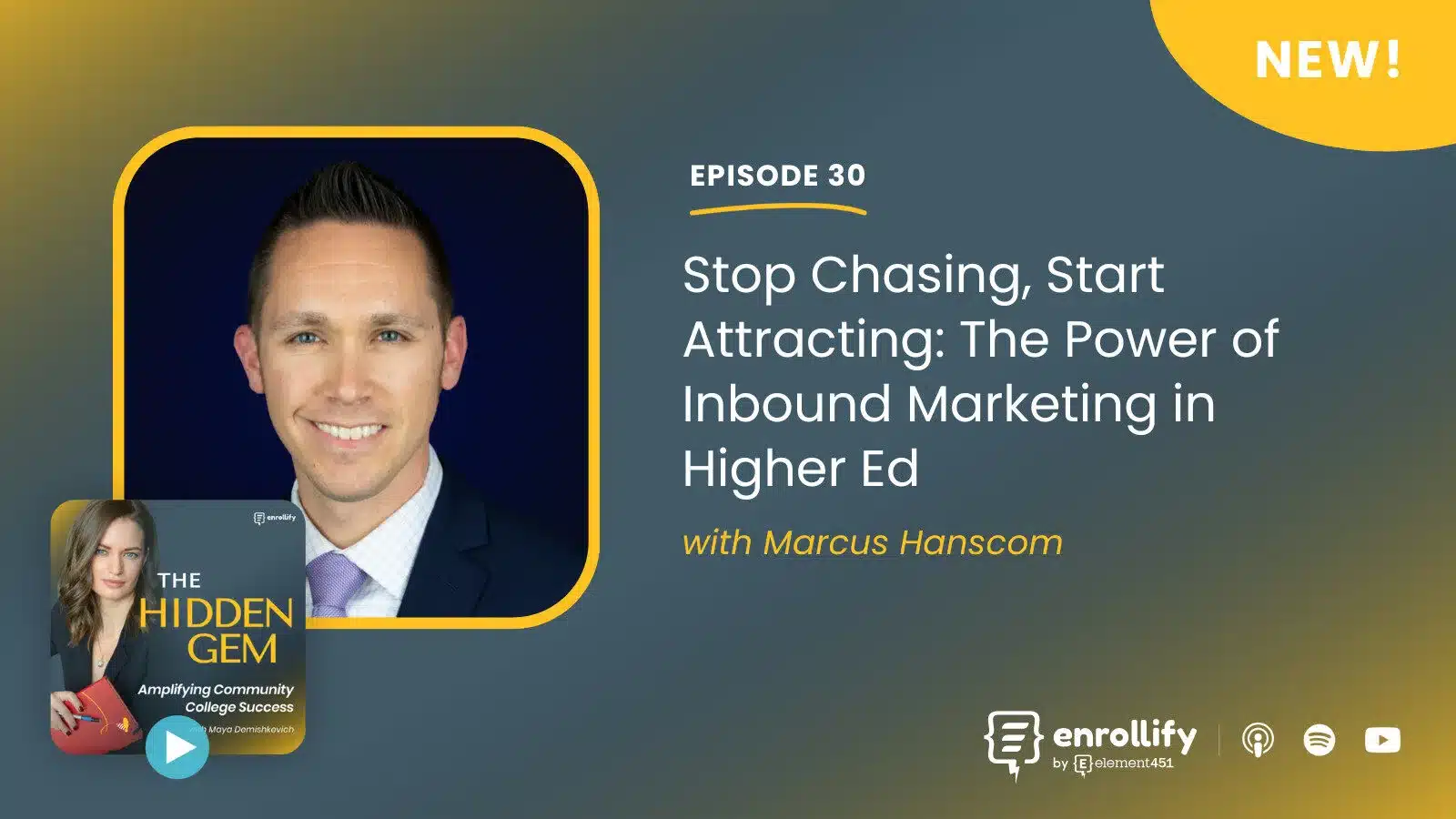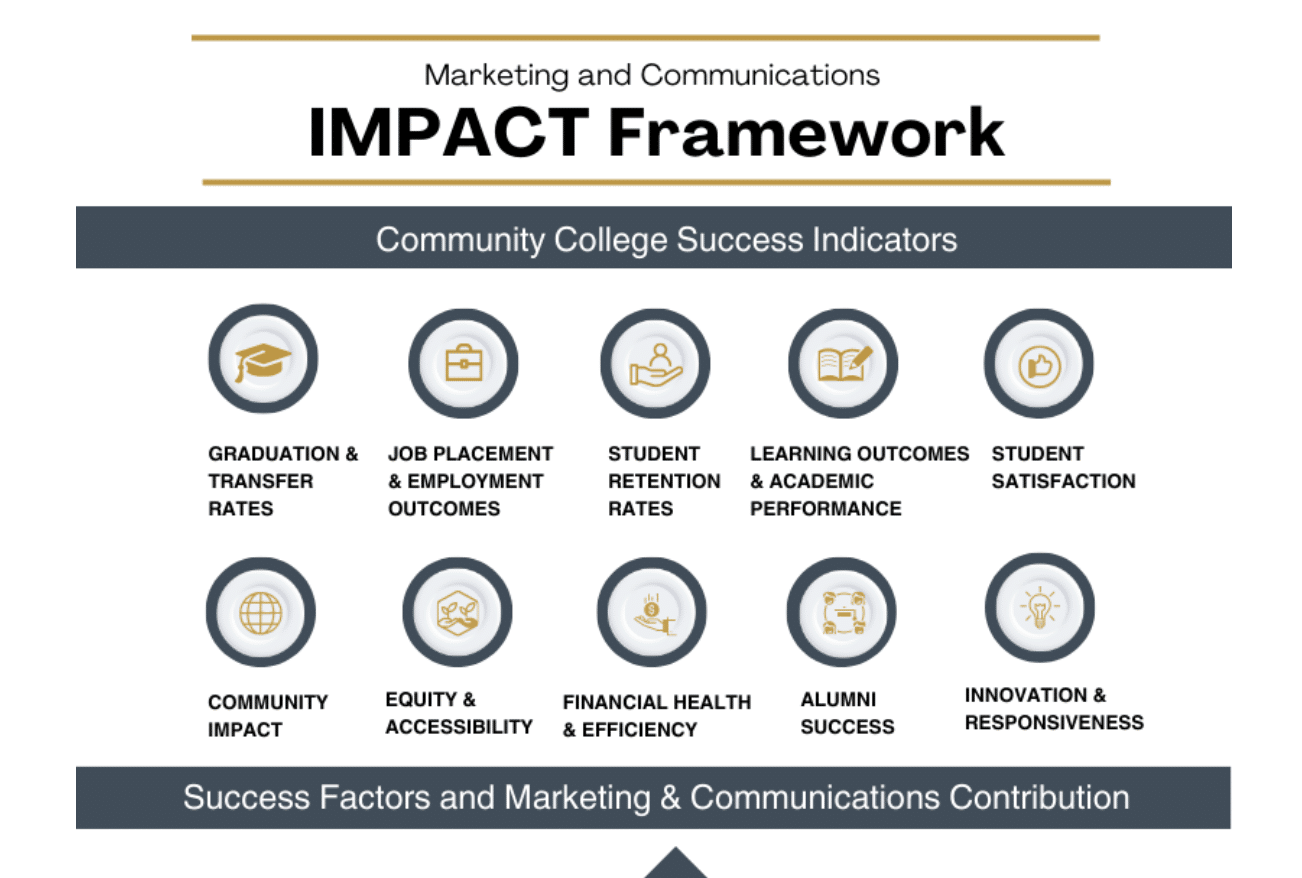In this episode of The Hidden Gem Podcast, host Maya interviews Marcus Hanscom, an expert in inbound marketing, to discuss how higher education institutions can leverage this strategy to attract and engage students. They explore the differences between traditional marketing and inbound marketing, key strategies for implementation, and the role of AI and content marketing in student recruitment.
What is Inbound Marketing and How Does It Differ from Traditional Marketing?
- Traditional marketing is interruptive, relying on ads and outreach to push messages to potential students.
- Inbound marketing, by contrast, is like a magnet—drawing students in by answering their questions and addressing their concerns at the right time.
- Effective inbound strategies leverage content to meet prospective students at different stages of their decision-making process.
The Relationship Between Inbound Marketing and Content Marketing
- Content marketing is a crucial part of inbound marketing, providing valuable resources to prospective students.
- Schools often mistake PR and institutional achievements for content marketing, but students need content that speaks to their concerns, not institutional accolades.
- Well-crafted content addresses student pain points, such as financial aid, career prospects, and program flexibility.
The Role of Inbound Marketing in the Student Decision Journey
- The student journey consists of three main stages:
- Awareness: Students start researching their options and seeking general information.
- Consideration: They narrow down choices and start deeper research into specific programs.
- Decision: They are ready to apply or enroll, needing a final nudge.
- Content should be designed to engage students at each stage, guiding them through the process.
Inbound vs. Paid Advertising: Which is More Effective?
- Paid ads can be effective but should be integrated with inbound strategies for better conversion.
- Content offers (e.g., downloadable guides, quizzes, and webinars) improve engagement compared to direct "apply now" ads.
- A well-structured inbound strategy reduces advertising costs while improving lead quality.
How Colleges Can Implement Inbound Marketing In-House
- Start with personas: Define target student profiles based on demographics, motivations, and concerns.
- Develop content for different funnel stages: Blogs, guides, videos, and FAQs that align with student needs.
- Leverage AI for content creation: Tools like ChatGPT can assist in drafting content, but human editing ensures uniqueness and brand consistency.
- Use SEO and data-driven insights: Optimize content based on search behavior and performance metrics.
The Long-Term Benefits of an Inbound Marketing Strategy
- Content continues to drive traffic and engagement long after creation, unlike paid ads that stop working once funding is cut.
- SEO-optimized content ranks higher over time, increasing organic reach.
- Schools can reduce the workload on admissions teams by addressing common questions through well-structured digital content.
Final Thoughts
Marcus highlights that inbound marketing is a long-term investment that builds stronger engagement with prospective students. By focusing on high-quality, informative content, schools can position themselves as trusted resources, ultimately increasing enrollment while lowering marketing costs.
For institutions looking to implement inbound marketing, Marcus advises starting small, leveraging AI responsibly, and continually refining strategies based on data insights.

